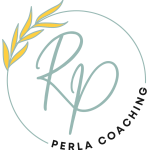If you think you are leading and no one is following you, then you are only taking a walk. – Afghan Proverb

Juan, the CEO of a national company, tells me that he feels distance from his staff and an underlying air of tension in the workplace. He knows he’s part of the problem.
Day after day, crushed by the pressure of his responsibilities, he’s increasingly isolating himself in his office. He thinks he can’t just be “one of them” and open up. It’s not how leaders are supposed to act. If he does, he fears his team won’t respect him. If he gets to know them better, it will be more complicated when he must give them bad news or turn down their ideas.
Listening as his leadership coach, it’s clear that Juan has become unmoored from his sense of self in carrying out his tasks as a company leader.
I see this in many of the leaders I coach. They’re splintered between the need for a firm hand and the equally vital need to establish genuine relationships with their staff.
How to find the balance? Is it even possible?
I tell Juan that to find his stride as a leader, he must start understanding himself and clarifying his purpose, values, and strengths.
To illustrate this point, I often use art to help my clients step back from their problems and shift their perspectives around them. So, I show Juan a picture of one – an iceberg above and below the surface.

What part of himself is he keeping hidden below the water for fear of being too vulnerable?
Sharing that vulnerable part of himself with his team will help them understand what he thinks, values, and believes. It will also show them that he cares, making it easier for them to trust and want to follow his lead.
Much like painting, building trust is a layering process. The more we reveal about ourselves, the stronger the relationship gets.
Yes, but wouldn’t showing my vulnerability make me weak in my team’s eyes? Juan asks.
I caution him to observe his spiraling negative thoughts and the negative feelings they create. I remind him that feelings are not facts and invite him to shift the focus back to what matters to him: his values.
I ask him: If your team knew what you stand for and saw you stay true to it with your actions, over and over, do you think they would see it as a weakness or a strength?
Could you see that if you stayed true to yourself, your staff would respect and accept even your most challenging decisions, regardless of whether they agree with you?
Juan starts to understand how this shift in perspective can open a new, more empowering narrative for himself and help him lead in a way that makes his team believe in him and want to follow him.
But how do I start? He wonders.
I encourage him to begin with the core values he once identified to me—curiosity, fairness, humility, and love of learning. He smiles as he admits that learning energizes him. So, how could he use that love of learning to interact with his staff?
“I could build time after meetings to have casual conversations and ask them: What are they learning about themselves amid the year’s challenges? I can share my insights, and together, we can talk about how to apply some of what we are learning to our work.”
It sounds like an excellent first step, and Juan’s willingness to explore himself made it possible.
What about you?
What parts of yourself do you wish to understand more?
How can this make you more accessible to your team and allow them to appreciate your leadership’s strength fully?
For further exploration of the theme ‘vulnerability in leadership, I highly recommend the work of Brené Brown.
